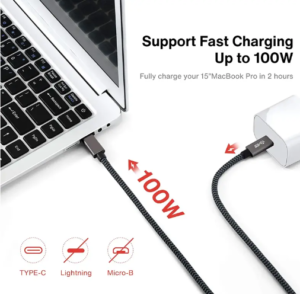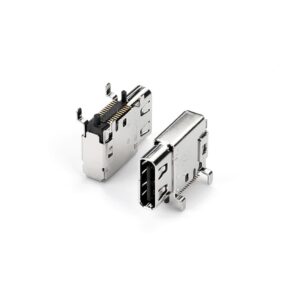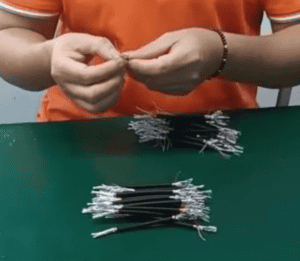
USB4 Cable Specifications: The Future of High-Speed Connectivity
Introduction As technology continues to evolve, the demand for faster, more efficient connectivity solutions has become critical for businesses and
Choosing the right electronic connectors is crucial for the reliability and performance of any electronic system. Connectors serve as the critical link between various components, enabling the transfer of power, signals, and data. This guide will help you understand the essential factors to consider when selecting electronic connectors for your applications, ensuring you make an informed decision that meets your specific needs. We’ll also highlight the importance of partnering with a reputable electronic connectors manufacturer.
To begin, it’s essential to identify the specific requirements of your application. Electronic connectors come in various types, each designed for different purposes. The first step is to clearly define the type of application you need connectors for, whether it’s data transfer, power supply, or signal integrity.
Understanding the environmental conditions is vital. Connectors must withstand the operating environment’s temperature, humidity, and vibration levels. For example, connectors used in automotive applications need to be robust against extreme temperatures and vibrations.
Different industries have unique requirements. Medical devices demand high precision and reliability, while industrial applications might prioritize durability and resistance to harsh conditions.
| Connector Type | Application | Voltage and Current Ratings | Environmental Conditions | Signal Integrity | Durability and Reliability |
|---|---|---|---|---|---|
| Wire-to-Board Connectors | Household appliances, industrial machinery | Moderate to high voltage and current | Moderate temperature, low vibration | Moderate | High (suitable for frequent connections) |
| Board-to-Board Connectors | Computer systems, communication devices | Low to moderate voltage and current | Controlled environment, low vibration | High (critical for high-speed data transfer) | Moderate to high (depends on application) |
| Cable-to-Cable Connectors | Networking, telecommunications, portable devices | Variable voltage and current | Moderate temperature, moderate vibration | Moderate to high | High (suitable for flexible applications) |
| RF and Coaxial Connectors | Antennas, broadcasting equipment, high-frequency systems | Low voltage, low current | Controlled environment, low to moderate vibration | Very high (essential for signal integrity) | Moderate to high (depends on usage frequency) |
| Circular Connectors | Aerospace, military, heavy machinery | High voltage and current | Extreme temperature, high vibration, moisture | High | Very high (designed for rugged conditions) |
| Rectangular Connectors | Industrial automation, medical devices | Moderate to high voltage and current | Moderate temperature, low to moderate vibration | Moderate to high | High (suitable for reliable, long-term use) |
| Fiber Optic Connectors | Data centers, telecommunications | Very low voltage (optical signals) | Controlled environment, low vibration | Very high (critical for data transmission) | High (precise alignment required) |
| USB Connectors | Consumer electronics, computers, peripherals | Low voltage and current | Controlled environment, low vibration | High (important for data transfer) | Moderate (depends on usage frequency) |
| Power Connectors | Power supplies, industrial equipment | High voltage and current | Moderate to extreme temperature, vibration | Low to moderate | High (designed for reliable power delivery) |
| IDC Connectors | Computer peripherals, networking | Low to moderate voltage and current | Controlled environment, low vibration | Moderate | Moderate (suitable for quick and secure connections) |
This table provides a detailed comparison of different types of electronic connectors, their typical applications, and specific requirements in terms of voltage and current ratings, environmental conditions, signal integrity, and durability. Use this table to identify the best connector type for your application based on these criteria.
Understanding the various types of connectors available can help narrow down your options. Here are some of the most common types:
Each type of connector has its advantages and disadvantages. For example, wire-to-board connectors are typically more secure and durable, while cable-to-cable connectors offer flexibility and ease of installation. Consider your application’s specific needs to choose the right type.

One of the most critical aspects of choosing a connector is its electrical specifications.
Ensure the connectors can handle the required voltage and current for your application. Overloading connectors can lead to overheating and failure.
For applications requiring high-speed data transfer, maintaining signal integrity is crucial. Look for connectors designed to minimize signal loss and interference.
Proper shielding and grounding are essential to protect against electromagnetic interference (EMI) and ensure stable performance, especially in high-frequency applications.
Mechanical specifications determine the physical characteristics of the connector.
The size and shape of the connector must fit your design. Space constraints are common in compact electronic devices, making miniature connectors an ideal choice.
Consider the durability of the connectors, especially in harsh environments. Look for connectors with robust housing and materials designed to withstand physical stress.
Mating cycles refer to the number of times a connector can be connected and disconnected before it fails. High mating cycles are essential for connectors that will be frequently used.
Insert a video demonstrating the importance of proper electrical and mechanical specifications.
Connectors must be designed to operate under specific environmental conditions.
Ensure the connectors can operate within the temperature range of your application. Some connectors are designed for extreme temperatures, suitable for automotive or aerospace applications.
For applications exposed to moisture or high humidity, connectors with water-resistant or waterproof features are necessary.
In industrial applications, connectors might be exposed to chemicals, oils, or other harsh conditions. Choose connectors made from materials resistant to these elements.
| Environmental Condition | Features | Example Connectors | Illustrative Description |
|---|---|---|---|
| High Temperature Environments | – Heat-resistant materials – High-temperature ratings – Thermal management solutions | – Circular Connectors (Aerospace) – Power Connectors (Industrial Equipment) | Connectors in a high-temperature industrial setting with temperature ratings |
| Moisture and Humidity Resistance | – Waterproof or water-resistant seals – Corrosion-resistant materials – IP67 or higher ratings | – Circular Connectors (Outdoor Applications) – Industrial Connectors (Heavy Machinery) | Connectors in a humid or wet environment with IP ratings and waterproof seals |
| Vibration and Shock Resistance | – Vibration-resistant design – Secure locking mechanisms – Ruggedized housing | – Circular Connectors (Military) – Rectangular Connectors (Automotive) | Connectors in a high-vibration scenario like automotive or military applications with vibration-resistant features |
| Chemical Resistance | – Chemical-resistant materials (e.g., Teflon, silicone) – Sealed designs to prevent ingress – Enhanced durability against corrosive substances | – Industrial Connectors (Factories) – Custom Connectors (Specialized Equipment) | Connectors in a chemical plant or factory setting, highlighting chemical-resistant materials |
| Controlled Indoor Environments | – Standard materials (plastic, metal) – Moderate environmental protection – Standard ratings (e.g., IP20) | – USB Connectors (Consumer Electronics) – Board-to-Board Connectors (Computers) | Connectors in a controlled environment like an office or data center, showing standard features |
This table provides a concise overview of different environmental conditions and the corresponding features required for connectors, along with examples and illustrative descriptions for better understanding.
Quality standards ensure connectors meet specific performance and safety criteria.
Look for connectors that comply with industry standards and certifications, such as ISO, UL, or RoHS. These certifications ensure the connectors are safe, reliable, and environmentally friendly.
Different industries have specific regulatory requirements. For instance, medical devices must adhere to strict standards for biocompatibility and sterilization.
Working with a reputable manufacturer is crucial for obtaining high-quality connectors.
Reputable manufacturers provide warranties and post-sale support, ensuring any issues are promptly addressed.
Insert case studies or testimonials from trusted manufacturers.
Custom connectors are tailored to meet specific requirements, offering several benefits.
Custom connectors can be designed to fit unique specifications, ensuring optimal performance and reliability.
While custom connectors might have a higher initial cost, they can provide long-term savings by reducing failures and maintenance needs.
Standard connectors are readily available and typically cost-effective.
Standard connectors usually have shorter lead times, making them ideal for projects with tight deadlines.
Standard connectors are often more economical, especially for large-scale production.
Insert a table comparing custom and standard connectors in terms of cost, availability, and suitability for different applications.
When choosing connectors, consider future expansions or upgrades.
Choose connectors that can adapt to future technological advancements and increased performance requirements.
Stay updated with the latest trends and advancements in connector technology to ensure your choice remains relevant.
Long-term planning can save costs and reduce downtime.
Establish a maintenance schedule and plan for eventual replacements to ensure continuous operation.
Maintain a good relationship with your manufacturer for continuous support and updates.
Choosing the right electronic connectors is a critical decision that impacts the performance and reliability of your electronic systems. By understanding your application requirements, evaluating key factors, and partnering with a reputable electronic connectors manufacturer, you can ensure you make the best choice for your needs. Remember to consider both current and future requirements to future-proof your selection.
Final Tips for Making the Right Choice
Call to Action: Contact a trusted electronic connectors manufacturer today to discuss your specific requirements and get expert advice on choosing the right connectors for your application.

Introduction As technology continues to evolve, the demand for faster, more efficient connectivity solutions has become critical for businesses and

Understanding the Evolution of USB Connectors In today’s technology-driven world, USB (Universal Serial Bus) connectors are an integral part of

At EDOM Electronics, we take pride in our meticulous approach to manufacturing high-quality USB C to C cables. Today, we’re
WhatsApp us
